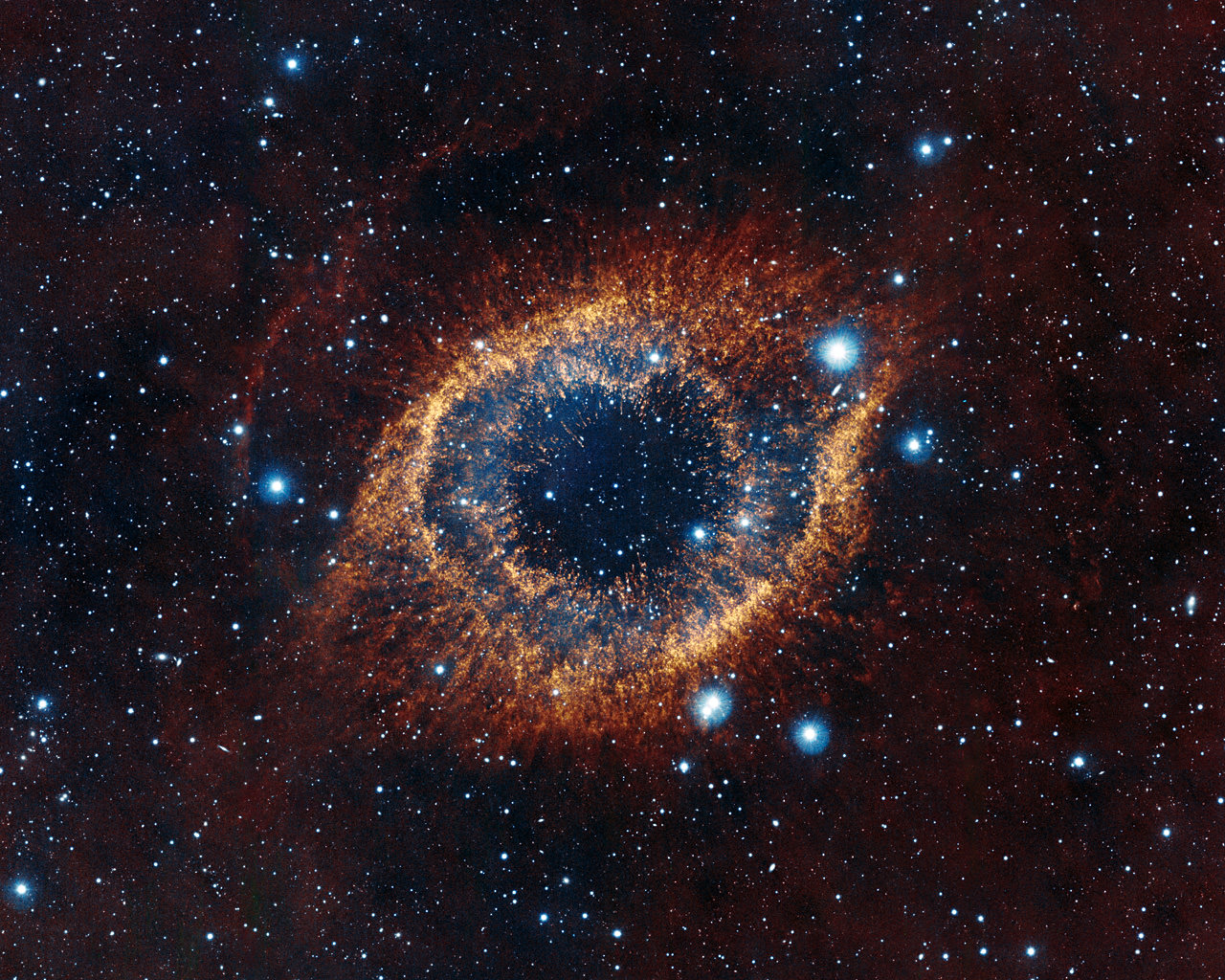In this series we are exploring the weird and wonderful world of astronomy jargon! You’ll be confused with an actual planet after today’s topic: planetary nebula!
Confusingly, planetary nebulae have absolutely nothing to do with planets. The misnomer comes from the early days of modern astronomy, when telescopes were revealing a strange and wonderful universe. Those astronomers found objects that looked round and fuzzy, so were “nebulous” but also planet-like. By the time astronomers finally figured out what they were, the term had stuck.
Planetary nebulae are what happens at the very end of the life cycle of a Sun-like star. Through their lives stars fuse hydrogen into helium, and that fusion is what keeps them shining. But eventually they run out of usable hydrogen in their cores, and switch to fusing helium instead. When that runs out, they’re left with a core of carbon and oxygen.
Sun-like stars don’t have enough mass to generate the pressures needed to fuse carbon and oxygen, so that core just sits there.
While all of this is happening, the rest of the star goes through several stages of inflating, becoming what’s known as a red giant, and shrinking. With every passing cycle it loses more and more of its atmosphere into its system.
Eventually all that’s left is the leftover core and a tenuous cloud of hydrogen, helium, and other elements.
When the core is first exposed it has a temperature of a few million Kelvin. The intense radiation pouring out of that core illuminates the gas cloud surrounding it, creating the planetary nebula. Once the core cools off, it can no longer power the show, and the nebula becomes invisible. That’s why planetary nebulae have relatively short lifetimes, only a few tens of thousands of years each.
Even though they don’t last long, planetary nebulae are common throughout the galaxy, because there are so many Sun-like stars. Indeed, one day our own Sun will create such a nebula.

